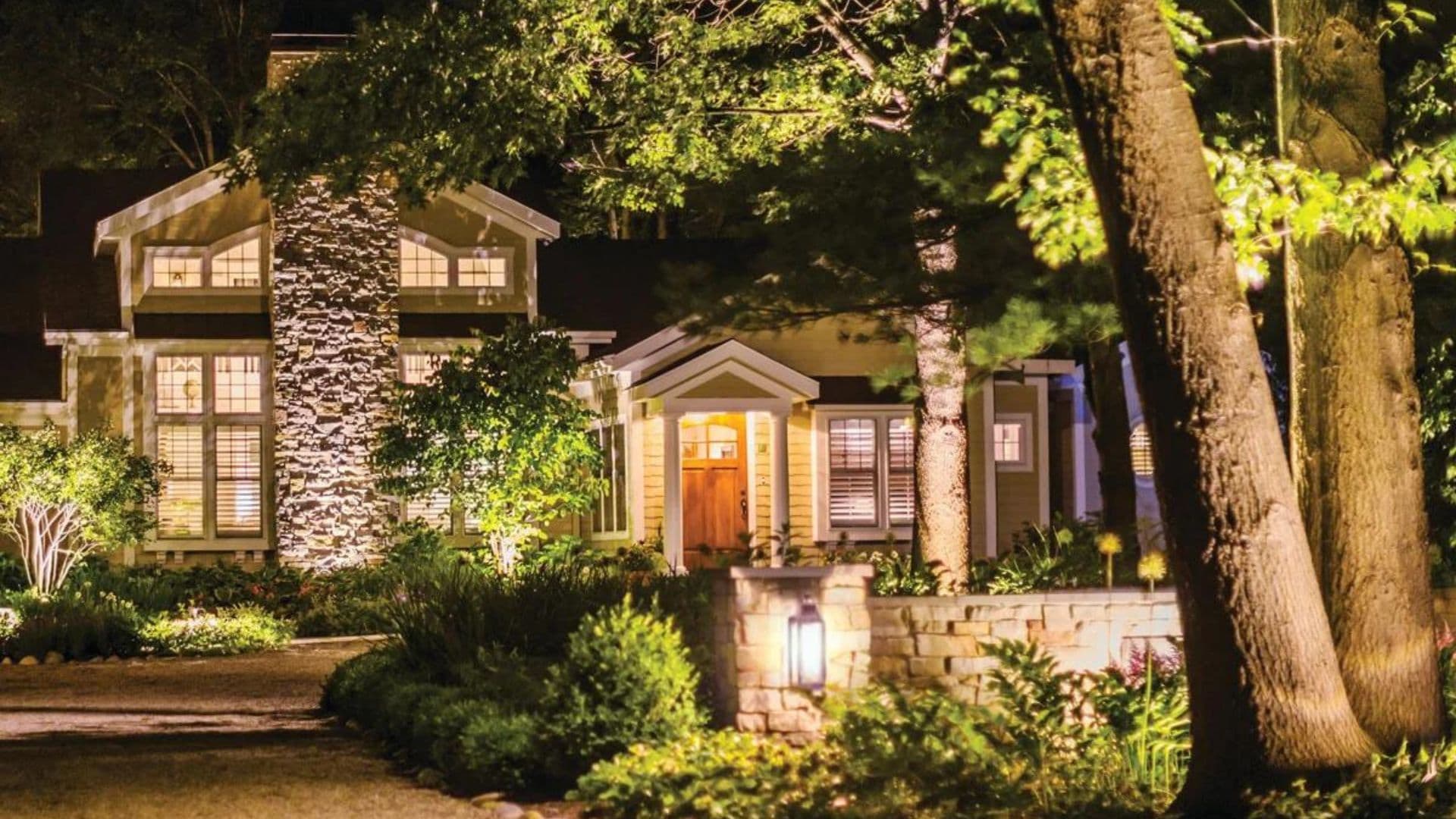Low voltage landscape lighting is a simple and secure DIY project. There is a limited potential for electrical shock while using these landscape lights, and the cables may be buried in quite shallow holes. However, if you are going to use lighting that operates on line power (120V), you will need to have it installed by a qualified electrician. You can also ask professionals to install landscape lighting for you if you can’t do it alone.
Before getting started, be sure you have consulted both the National Electrical Code and the electrical codes in effect in your area. Also, collect any equipment that you may need for installing landscape lighting. The most crucial of these are a pair of wire strippers as well as a shovel or another instrument specifically designed for trenching. Depending on the requirements of your project, you may need to acquire additional tools.
Steps To Follow When Installing Low-Voltage Lighting
There are several steps involved when it comes to installing low-voltage light fixtures. The following are all the processes to expect when installing these low-voltage lights:
Label any cable or irrigation lines.
Before putting in low-voltage landscape lighting, it’s important to find and mark any existing cables or irrigation lines.
Unpack and put together your light fixtures.
Remove everything from its packaging, then install any lamp-ready fixtures’ mounts and bulbs. There are various methods for mounting fixtures, but the vast majority of them fall into one of these three groups. Mounting a fixture with a stake requires first attaching a stake to the fixture and then orienting the stake so that it points directly into the ground.When a fixture has to be mounted to a hard surface, surface mounting is the method of choice, and it often involves the use of a power drill. In-ground installation means putting a fixture right into the ground, so it’s helpful to have a spade, shovel, or post-hole digger on hand.
Clear a route for the wires.
Make room for the wires that will be running through your project by clearing a route for them and positioning your fixtures according to the project map you prepared earlier in the design stage.
Mounting your transformer for your lighting system
Before installing your transformer, there are a few factors to consider, and it is essential to keep them in mind. Transformers need to be at least one foot away from anything in all directions, at least thirty feet away from any body of water, and on a surface that can handle the heat the device makes.
Plan out and dig the trenches for your major wire lines.
When digging trenches, the majority of individuals will use either a shovel or a spade; however, there are also more specialized instruments available. Your municipal regulations will determine the precise depth of the trenches that you need to dig. After the trenches have been excavated, lay the wires in the trenches and then thoroughly cover them with the earth. To ensure that you have space for modifications at a later time, make sure that you leave at least 5 feet of the wire exposed at either end.
Begin connecting your system.
Clamp-connect transformers are easier to set up because they employ levers rather than screws to secure themselves to the wires. The first step is to connect your transformer to your main power lines. To do this, one strand of wire must be inserted into the COM terminal, and the other must be inserted into a terminal that is either designated 12 volts or 15 volts.The 12-volt tap is designed for use with shorter wire lines that include fewer fixtures, while the 15-volt tap is designed for use with longer wire runs that need a greater amount of electricity. The low-voltage wire should be protected by a conduit between where it comes out of the transformer and where it goes into the ground.
Connect fixtures by splicing their lead wires to your main runs.
Using wire connectors of the twist-on type is by far the most popular approach. The final half inch of wire on either end is stripped, and then the wires are twisted together in a clockwise manner after being joined together with a clockwise twist. The connection should then be inserted into the cap, and the cap should be turned clockwise till the wire starts to spin with it.Utilizing clamp-connect connectors is yet another viable alternative. To use them, just press down on the lever and reverse the stripped wire ends so that they are inserted into the terminal. Complete the connection by snapping the housing back into place. This prevents the connection from being corroded and exposed to moisture. If you have different fixtures close to one another, you should think about using a hub. Hubs simplify the process of connecting several fixtures to a single power source in a single area.
Test the system.
You will now be able to test your system after all of the connections have been established. After turning on your transformer, you should check to see that all of your fixtures are illuminated by going around your property. If one of them isn’t working, the connection on your machine may be broken.
Adjust your lighting.
If all of your fittings are operating as they should, you can now move on to the part of your installation that entails making adjustments. You won’t be able to get a good look at the effects that each light fixture has on the overall illumination unless you wait until nightfall and then begin adjusting. Now, take another tour of your property and check to see that each light is pointed in the direction of the desired element in your garden.
Ready To Install Low-Voltage Outdoor Lighting?
If you are ready to change the appearance of your outdoor space but are unable to do it on your own, there are numerous specialists, such as Brite Creations, that can assist you in accomplishing this goal. In Raleigh-Durham, North Carolina, and the surrounding regions, Brite Creations provides comprehensive lighting services for every occasion, including holidays, parties, and events.The experts at Brite Creations are capable of creating a display that is unique to your property and will properly accentuate the aesthetic qualities of your house and garden. Brite Creations has been working in the lighting sector for over 17 years, during which time they have mastered the design, installation, and servicing of lighting systems. They will be able to install anything, including path lights, flood lights, and LED lights. Contact us today!


